Let’s talk about the Wickedest City of the West during her glory days, shall we? Nowadays, Port Royal is a sleepy fishing village located fifteen minutes away from Kingston’s international airport. There are still tourists who believe that Port Royal is a fictional place even after watching Pirates of the Caribbean. This article covers the rise and fall of Port Royal, how to plan a visit to the present-day town, the Giddy House and Fort Charles Maritime Museum. If you’re staying in another end of the island besides Kingston, consider booking a tour through Get Your Guide (includes transport).
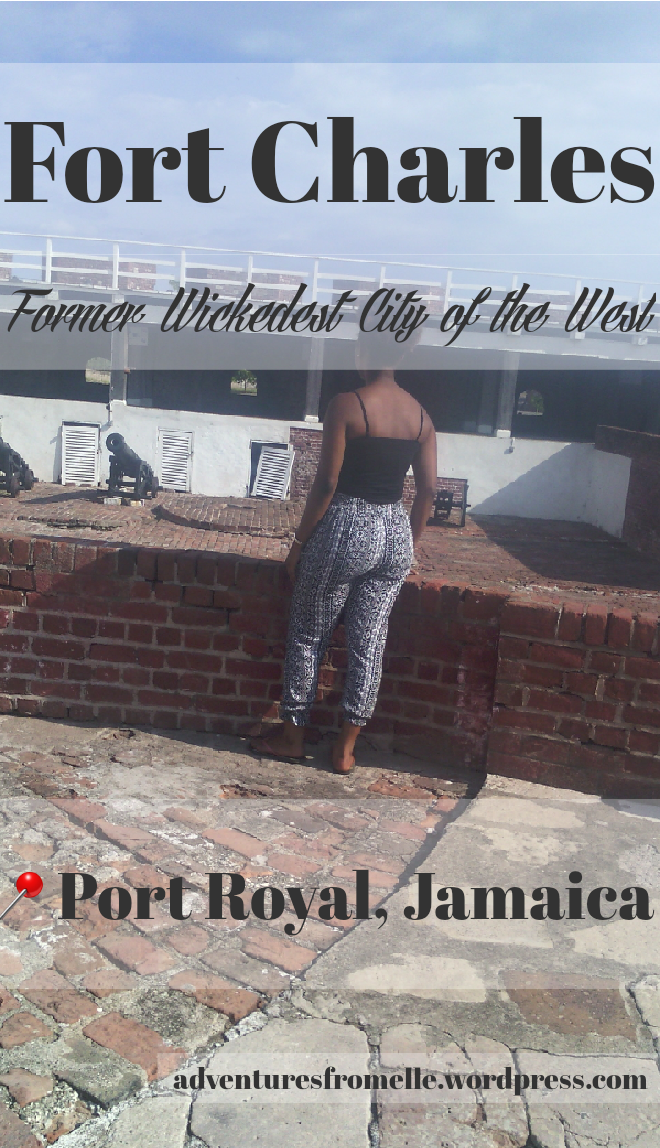
Before we get into the article, please subscribe for new adventures.
Also, please support the writer by checking out her books on Amazon.

How to Find Port Royal
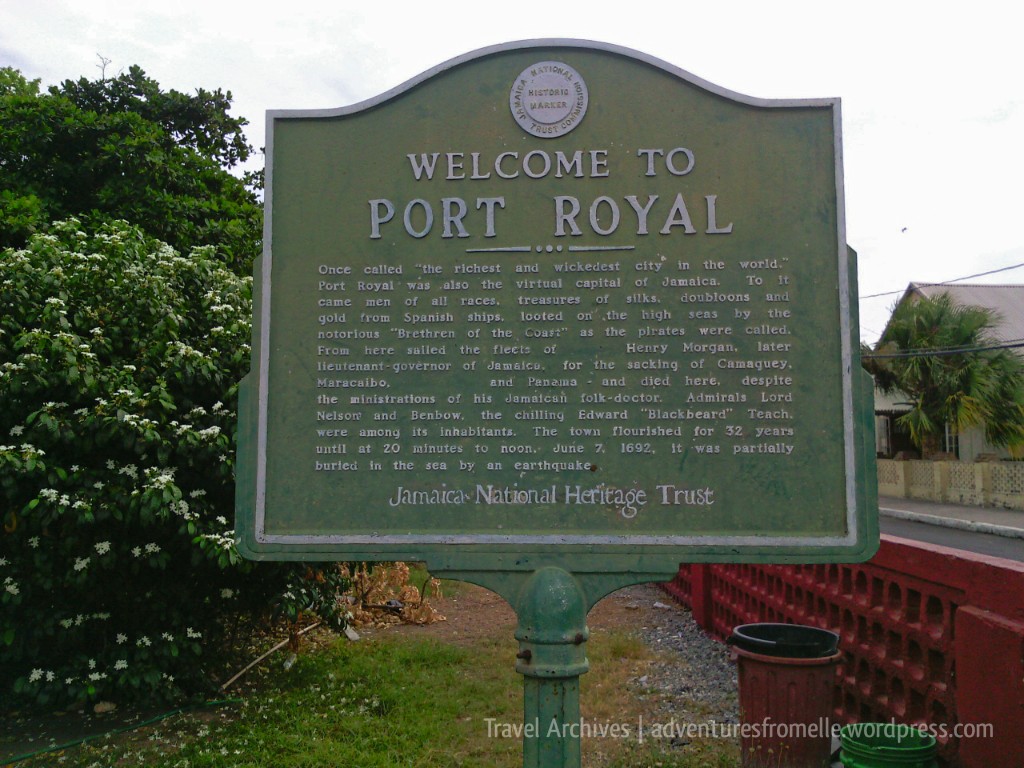
If you’re taking the bus, the one to get from North Parade in Downtown is JUTC route 98 and you’re getting off at the final stop. Driving to Port Royal is easy via car as well– just follow GPS. The Fort Charles museum tour is available every day from 9am–5pm at a cost of US$15 and $8 for foreigners and JA$1500 and $1000 for locals, adult and child prices respectively, as of 2023. Local adults are required to present a valid local ID. Discounts are available for local primary and secondary school children as well as teachers and tertiary students with ID. Guided tours of the town are also available at an additional cost. Pay at a small booth to the left of the entrance then you’ll be gestured to these white buildings pictured below to begin. Walk-ins are welcome and in fact, if you prefer wandering the fort without a guide, that’s allowed too!

How Port Royal Went From World’s Wickedest City to a Sleepy Fishing Village

Port Royal’s history dates back to the island’s earliest inhabitants, the Tainos, who used this area which they called Caguaya as a fishing port. When the Spanish took ownership of Jamaica, Port Royal was used as a harbour and for repairing sea vessels. However, the town came to notoriety when the British captured the island from the Spanish in 1655. The British realized the strategic relevance of Port Royal and quickly went about setting up fortifications to prevent invasion by other European powers. For the rest of the 17th century, Port Royal was Jamaica’s unofficial capital and home to the real pirates of the Caribbean. One in every four buildings was said to be a bar or brothel where the buccaneers would spend their spoils on wine and women. Piracy was a lucrative business, so much so that Port Royal was not only the wickedest city but also the richest city of the western world. Its location along the Kingston Harbour, the world’s seventh deepest natural harbour, made it a good commercial centre as well where merchants traded slaves, sugar and logwood.

As it grew richer, Port Royal’s notoriety for excess and debauchery grew, earning it the name ‘Sodom of the New World.’ Thus, when a massive earthquake and tsunami struck on June 7, 1692 which sunk most of the city underwater and killed approximately 2,000 people, the local clergy described the catastrophe as God’s punishment. Subsequent disease outbreaks claimed an estimated 2,000 additional lives in the ensuing months. Attempts at rebuilding the city were met with fires, hurricanes and another earthquake in 1907. Hence, Port Royal’s popularity gradually faded.
Present-Day Port Royal
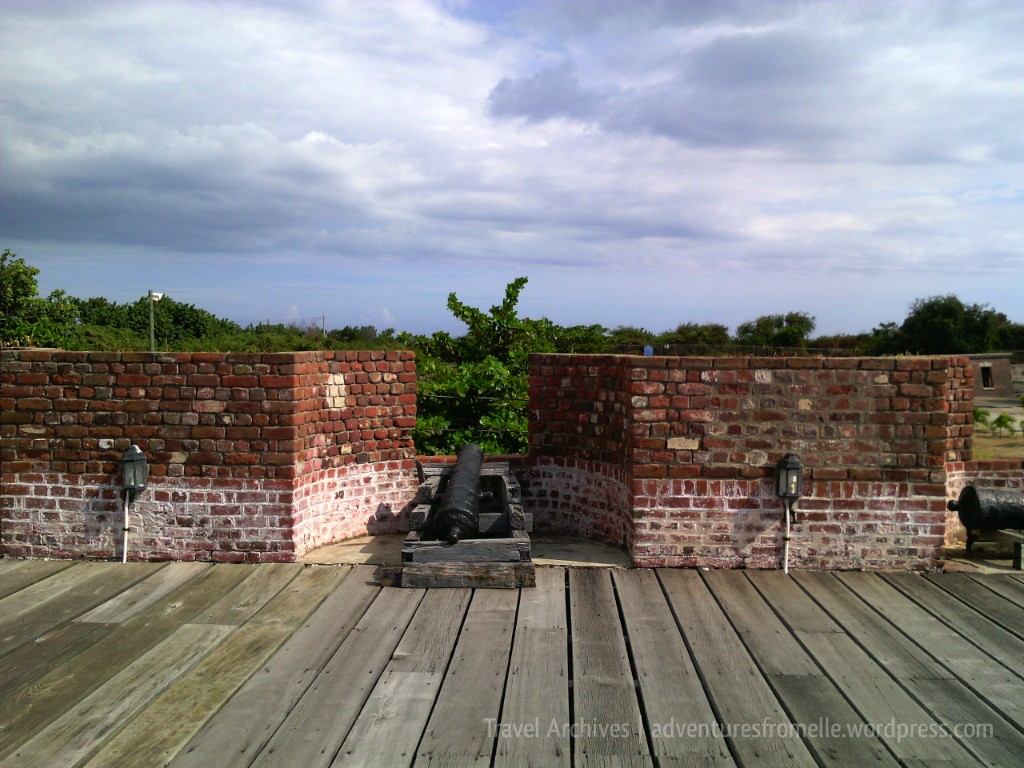
Much of the city is preserved a few metres under water, along with several hundred sunken ships. The sunken city of Port Royal is one of the world’s most important underwater sites, earning it a place on Jamaica’s UNESCO World Heritage Site’s tentative list for inscription alongside the Seville Heritage Park. Exciting work to make this dream a reality is underway through local stakeholders with overseas expert input. On land, Port Royal is a sleepy fishing village today which has maintained much of its beauty, heritage and independence. Its residents are very proud and welcoming of tourists. The community is small, laid-back, close-knit and untouched by crime.
Fort Charles

The Port Royal tour starts at the Fort Charles Maritime Museum. My informed and jovial guide Jahmawni did a superb job of bringing the tour and colourful past of his community to life. Fort Charles is Jamaica’s oldest fort, constructed in 1656. It was originally named Fort Cromwell but got renamed in 1662 to honour King of England Charles II. When built, the fort was almost completely surrounded by water, but the area around it eventually silted up. This fort was one of six built to guard the Kingston Harbour but was the only one to survive the 1692 earthquake. Damaged, it was reconstructed in 1699 by Colonel Christian Lilly, chief engineer of Jamaica.
The Giddy House at Port Royal
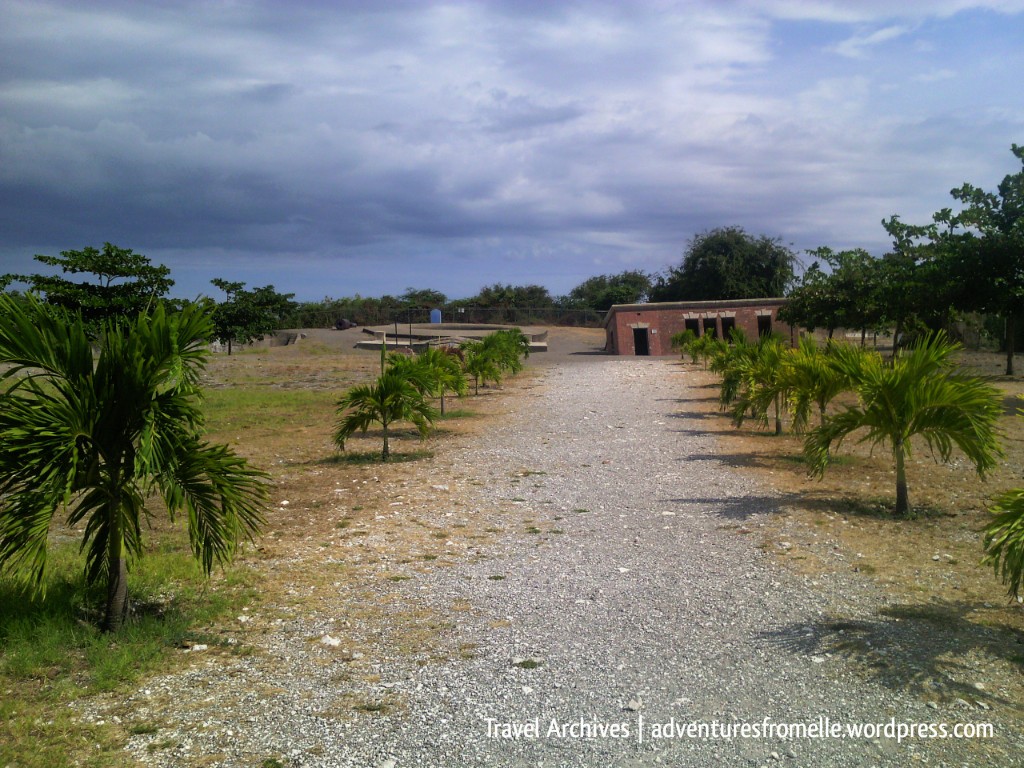
Built in 1888 to store Fort Charles’ artillery, this ordinary building was jolted to its present precarious position during the 1907 earthquake. The limestone incorporated into its structure makes it porous and semi-permeable, letting in and filtering sea water to create a tiny freshwater pool in the corner. The building wreaks havoc on the senses, but is it really a trip to Port Royal without speed-walking through the Giddy House? Ask someone to take a photo of you from the side– I assure you I haven’t edited the photo & was standing perfectly upright, or at least trying to.
Other Noteworthy Port Royal Landmarks
These places weren’t included in my Fort Charles tour but I explored them on my own.
St. Peter’s Anglican Church
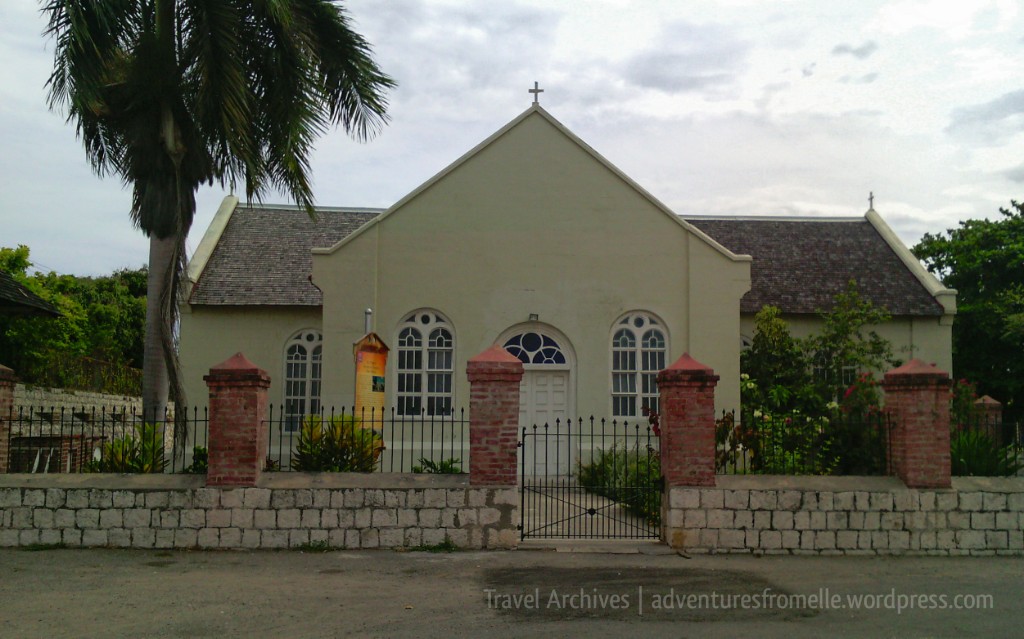
The original church was destroyed by the 1692 earthquake, rebuilt shortly after then destroyed again by fire in 1703. A plaque outside the church records that it was rebuilt between 1725-1726 and since then has undergone much restoration. Its walls are now cement-covered, hiding the original brick wall, but the original black and white tiles can still be seen inside the aisles of the Church.
The Old Naval Cemetery
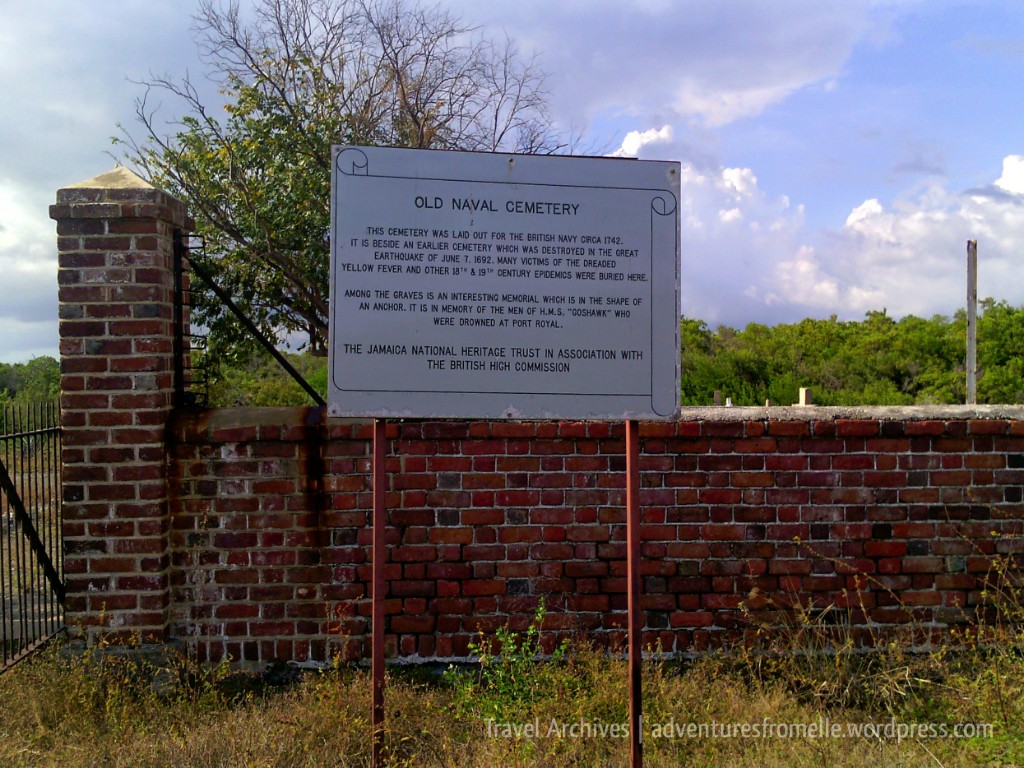
This cemetery serves as the final resting place for soldiers and sailors who died during the 1800s and prior at Port Royal, many of yellow fever. Some Port Royal residents say it’s haunted but I only saw a peaceful expanse with somber crosses, tombstones and epitaphs.
The Plumb Point Lighthouse
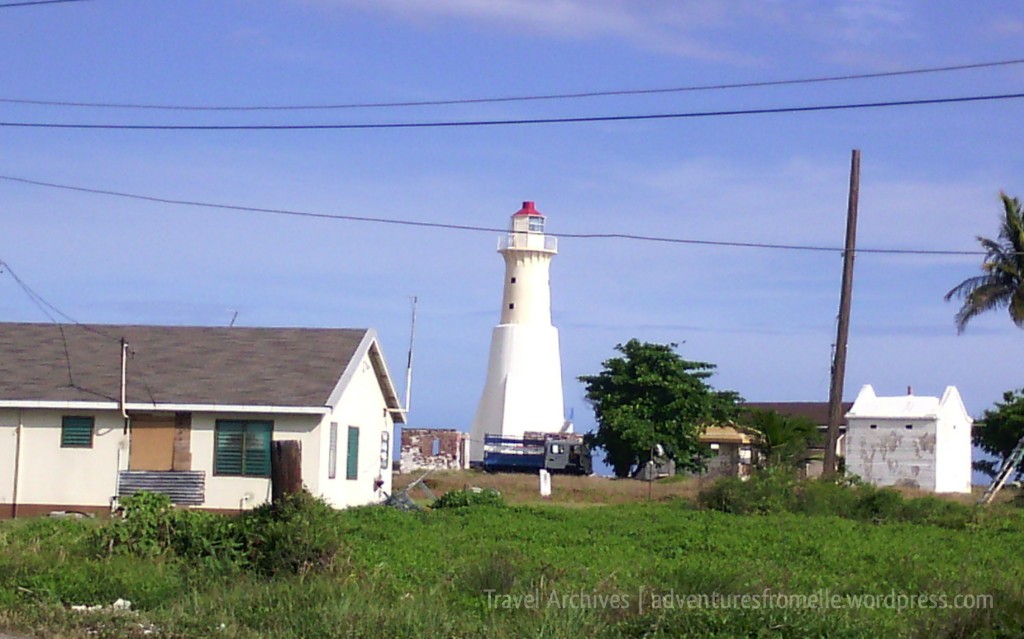
Constructed in 1853, the Plumb Point Lighthouse is still active & stands on the Palisadoes peninsula near the entrance of the Kingston Harbour. The tower stands at 70 feet (21m) tall & is built of stone and cast iron. It flashes a brief white light every 8 seconds and is visible as far as 25 miles away at night.
Wrap Up
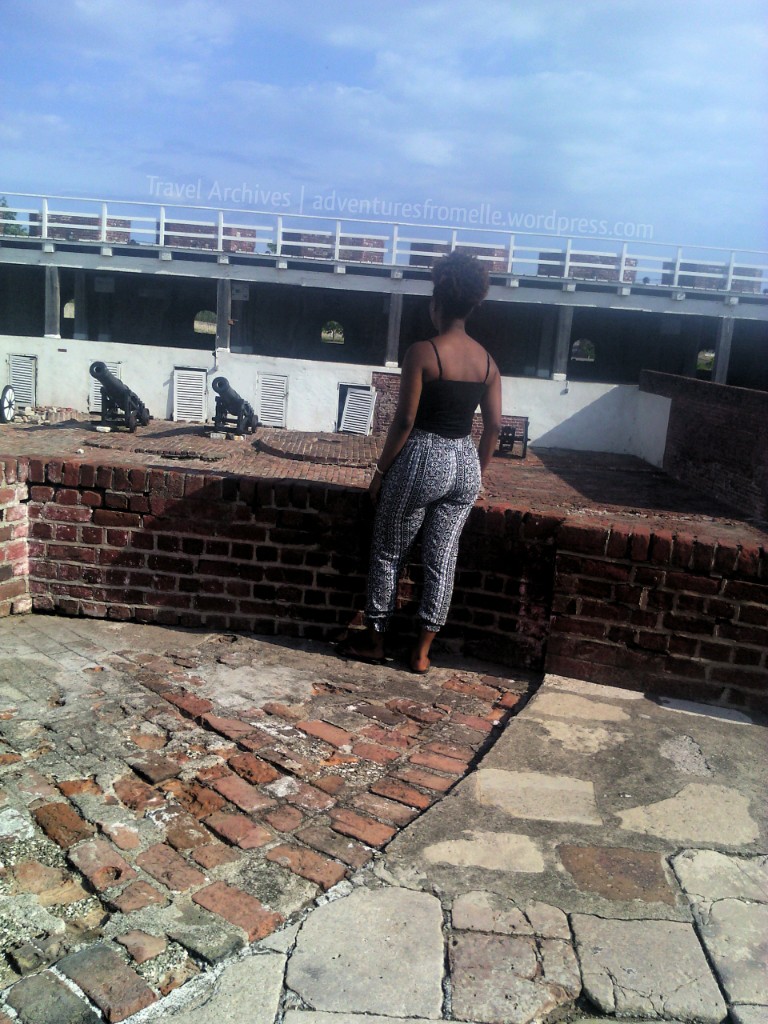
Present-day Port Royal bears no similarity to its 17th century reputation. This is great considering that Port Royal is now a popular field trip spot for schoolchildren. Nonetheless, its history is very exciting and what remains of the town today is definitely worth a look. Check out the Jamaican travel blogger who inspired my visit: The Swiss Freis.
‘Til next time! ✌🏽
Find Elle on Facebook, Pinterest, Instagram and now on YouTube.































This took me back straight to grade 2 in primary school where we went there and the police station after!
LikeLiked by 1 person
Oooh that’s awesome. I can’t even remember in what grade I’d visited, but it was surely a delight to explore Port Royal again as an adult 🙂 thanks for reading!
LikeLiked by 1 person
Hi, I just found your blog and love it. But wanted to make a correction, Caguay is the name of the Taino fishing settlement. When the Spanish arrived they called it Puerto Caguaya (Kingston Harbour) then after the 1655 invasion, the English anglicized the name to Cagway until it was changed to Port Royal.
LikeLiked by 1 person
Thank you so much, and for the correction too! I’ll make an update to this post soon 🙂
LikeLike
Just found this post and I really enjoyed revisiting Port Royal. When I was in the U.S. Navy I spent time in Kingston working on the recovery from hurricane Gilbert after September 14th, 1967. As part of a dive team the local government asked us to dive over Port Royal (it was restricted diving) and evaluate what the storm had done. The sunken city was amazing – you could make out a number of streets and the remains of buildings. Actually it looked like Gilbert had cleared a lot of sediment off the site.
LikeLiked by 1 person
Oh that’s just amazing!!!! That must have been a memorable dive. Thanks for sharing 🙂
LikeLike
Port Royal so rich in history. Been visiting from I was a little girl. Use to go to the beach with my family alot.
LikeLiked by 1 person
Informative as usual. What is a Port Royal visit without Gloria’s though? 😂 I am just kidding.
LikeLiked by 1 person
Thank you! You’re right though! Too bad I didn’t have enough for Gloria’s on this Port Royal visit haha. This was my first recreational Port Royal visit without stopping there. Hands down my favourite seafood place in Jamaica 🙂
LikeLiked by 1 person
Very nice piece as usual. Hopefully it will be even more exciting in the near future. Visit our Facebook site at port royal heritage tourism development- jamaica.
LikeLiked by 1 person
Thanks very much! I really appreciate that. I hope so too and will do 🙂
LikeLike
Love Port Royal, and the Fort Charles tour is very insightful without feeling long and drawn-out. I applaud that you also mentioned other notable historic sites in the small city, I did a walking tour including these and a few more sites sometime last year and have been meaning to do so again (and adequately capture on camera for posting). The Giddy House has everyone mastering the Micheal Jackson ‘Smooth Criminal’ lean lol.
LikeLiked by 1 person
Thanks dear! And please do. I’d love to read your perspective on the town. You’re right about the Smooth Criminal lean too haha. The only time many of us will ever get it right in our lifetimes 😂
LikeLiked by 1 person
Hey Elle! I see you made it back! *happy dance* I see you also enjoyed it just as much as you did in childhood 😀 Keep on exploring more of our Jamaican treasures, I really enjoy your adventures 🙂
LikeLiked by 2 people
Yes I did! Thanks very much 🙂 I certainly shall.
LikeLike